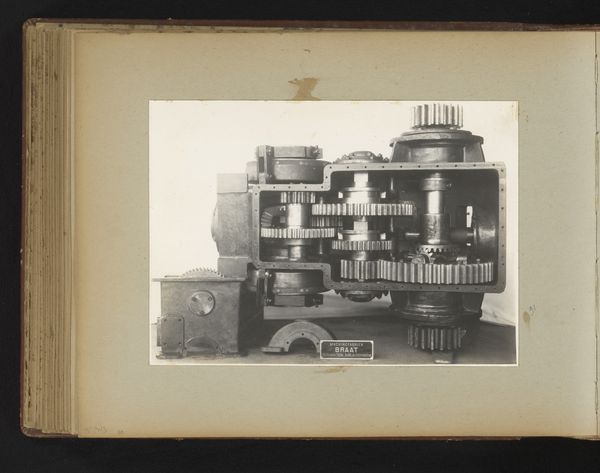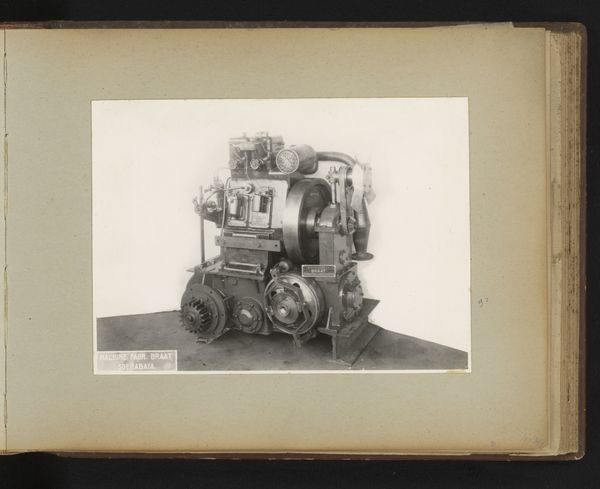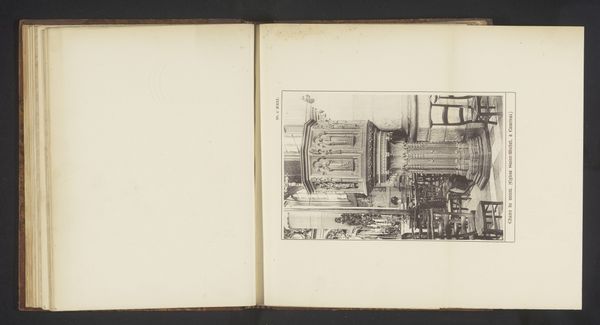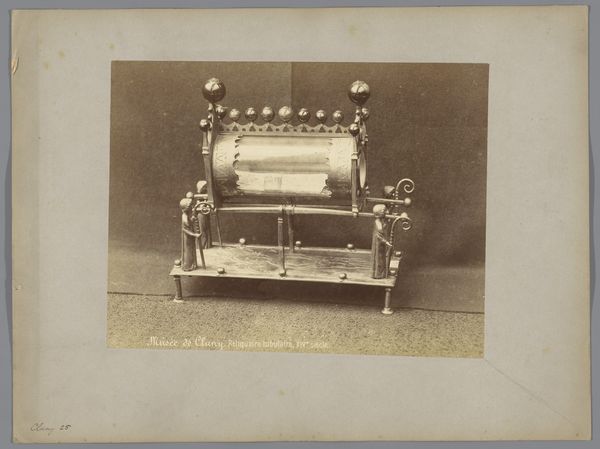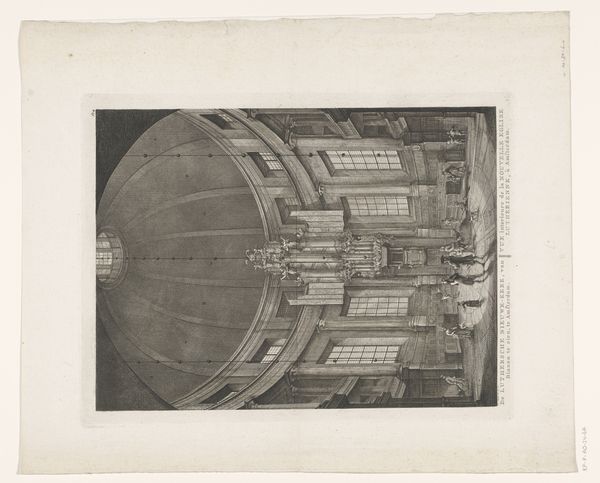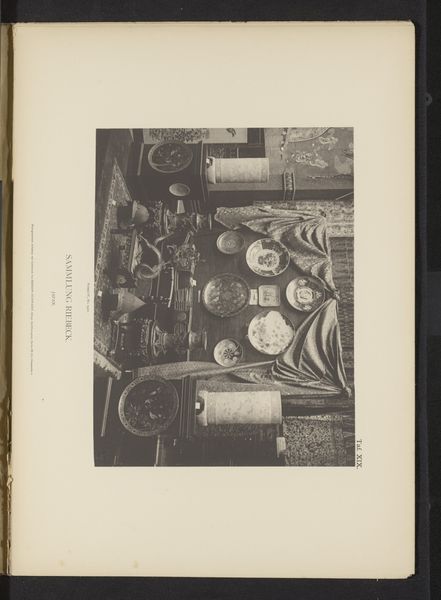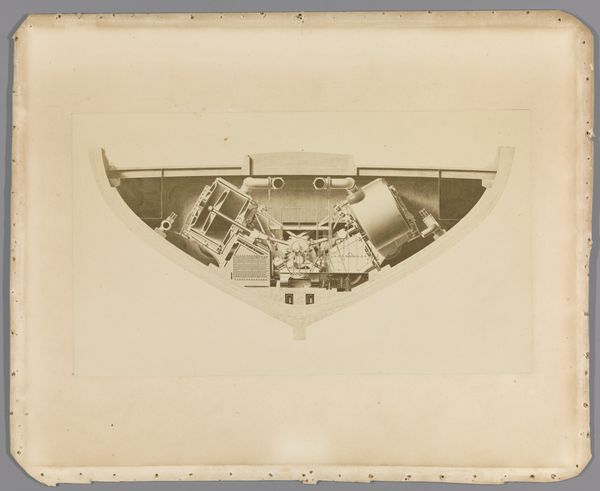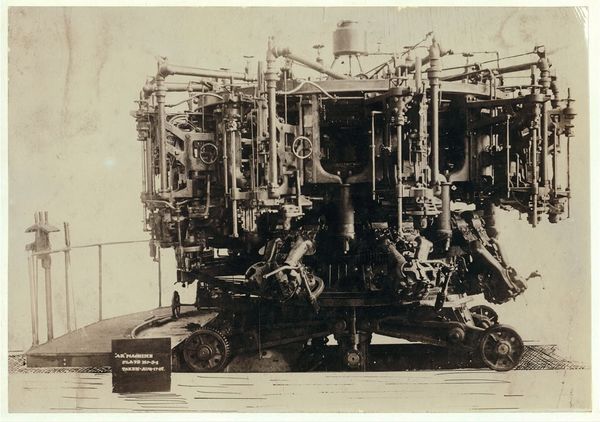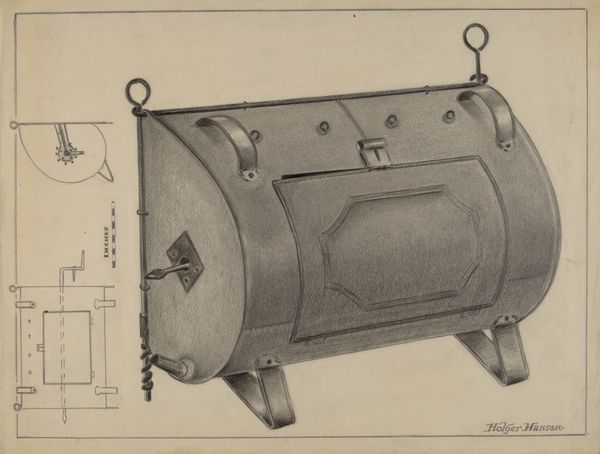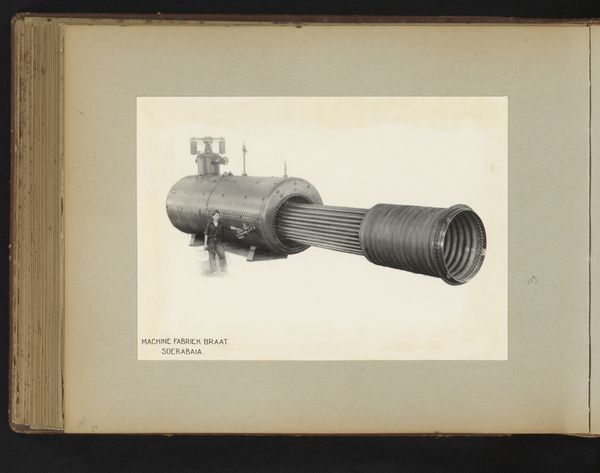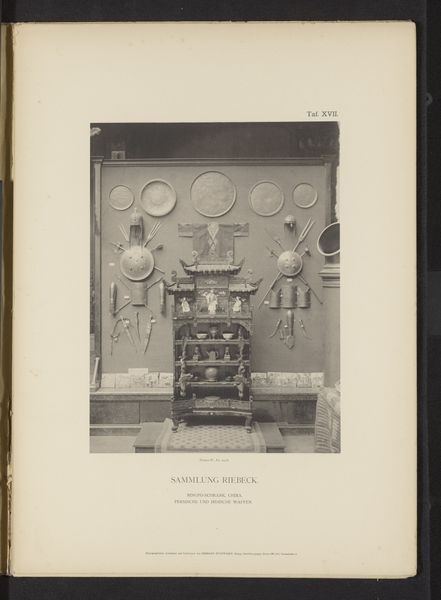
lithograph, print
#
lithograph
# print
Dimensions: height 48 cm, width 58 cm
Copyright: Rijks Museum: Open Domain
Editor: This intriguing lithograph, "View of a Steam Engine," dates back to between 1870 and 1880. The anonymous artist created quite a detailed image of industrial machinery. I'm struck by how it elevates the machine, turning it into an object of almost reverent contemplation. What are your thoughts on this piece? Curator: I think this print provides a powerful statement on 19th-century industrial production. As a lithograph, it's inherently tied to mass production—a copy of a copy. The means by which this image reached its audience reflects the very steam engine it depicts: technological advancement aimed at greater efficiency. We must consider the labor involved: the artist's hand translating engineering drawings to a printing stone, the printers producing potentially hundreds of these. What did such images represent in the social imagination? Editor: So you see it as less about the aesthetic appreciation of the steam engine and more about its role in society and how the print was made? Curator: Precisely. We tend to divorce art from its context, focusing on an individual's genius. This work invites us to consider the process—the physical and intellectual labor, the material conditions—that gave it form and meaning. Consider also the availability of the lithograph, a technique enabling the broad circulation of such imagery to diverse audiences: how does mass dissemination reshape access to technical knowledge, art, and notions of progress? Editor: That's fascinating! It shifts my understanding of the artwork from a static image to a dynamic part of industrial culture. Seeing the connection between its subject and the lithographic process provides a richer understanding. Thanks! Curator: Indeed, considering how things are made opens our eyes to the profound social impact art can have.
Comments
No comments
Be the first to comment and join the conversation on the ultimate creative platform.
